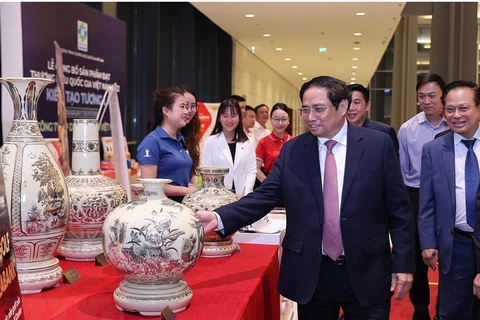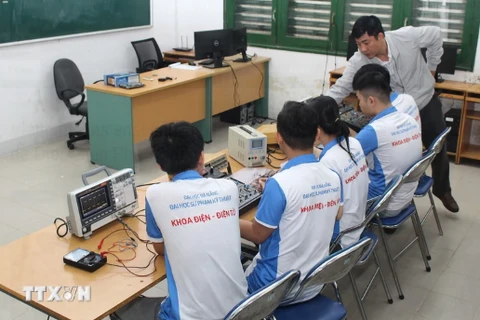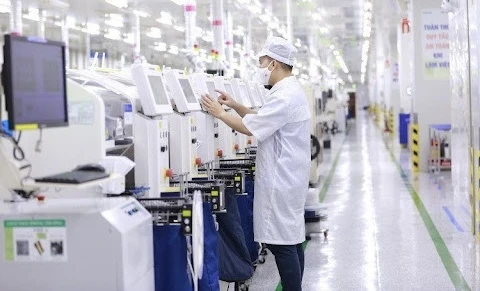
Hanoi (VNA) – The Government and businesses must have flexible access to powerful digital technology applications, thus capturing new trends to deeply integrate into the global value chain, said insiders.
Many large international corporations and enterprises are restructuring their supply chains to integrate into the global production network. Concurrently, production and business activities are innovated amidst remarkable achievements in digital technology application.
Vietnam's advantages in joining global supply chains
According to Dr. Nguyen Bich Lam, former General Director of the General Statistics Office (GSO), the world economy is currently facing numerous uncertainties, and competition among major countries is altering the traditional rules of the global economy.
The supply chain is evolving with new trends, demanding flexibility and strong access to digital technology applications from businesses, Lam said.
Furthermore, the global production network will determine the future of supply chains, alongside the strong growth of regional production networks, he noted, adding that in this phase, globalised services, information technology, and research and development will create new growth opportunities, accompanied by global competitiveness.
Additionally, the development of regional supply chains may lead to increased inflationary pressures, prompting countries to adjust inflation targets.
The expert said that Vietnam possesses several advantages to deepen its integration into global supply chains.
Accordingly, Vietnam is a promising market with a population of 100 million and a favourable geographic location, attracting attention from foreign investors. Moreover, Vietnam has a high level of openness in international trade with 17 free trade agreements (FTAs). The country is also recognised for its role as a connector in the segmented economy. With strong commitments made at COP 26, Vietnam aligns well with the trend towards green and circular economic development.
In recent times, many large investors have invested in Vietnam with new scientific and technological applications.

Alongside the advantages, Lam pointed out that domestic businesses face several challenges when participating in global supply chains due to weak internal strengthen and low competitiveness.
He said that each supply chain typically involves five partner groups, including raw material suppliers, producers, distributors and logistics providers, retailers, and customers. However, Vietnamese businesses often focus only on producers and pay less attention to the other partner groups.
Fully tapping advantages
Lam underlined the need to build a strategy to develop national businesses to align with the trends of reshaping and transitioning supply chains, Lam said. He suggested that the Government should play a supportive role and consider conditions and mechanisms to attract foreign investors.
Vietnam needs to fully implement its commitments under FTAs to enjoy sustainable and long-term advantages, he went on.
Dr. Nguyen Tu Anh, Director of the Centre for Economic Information, Analysis and Forecasting under the Party Central Committee's Economic Commission, emphasised that geographical distance no longer determines trade and investment under traditional models, as this factor has diminished in influence over time.
Vietnam currently holds a special position in connecting with global polarisation trends and poles, he said, noting that capital inflows from China, the US, Japan, and the Republic of Korea (RoK) continue to increase rapidly.
Underlining efforts made by the Government to resolve economic bottlenecks, he that businesses should anticipate risks and challenges proactively to take specific solutions and seize opportunities effectively.
Bui Thi Viet Lam from the US-ASEAN Business Council (USABC) in Vietnam, said Vietnam needs cohesive and breakthrough policies compared to surrounding countries, allowing sandbox experiments to attract investment, especially as Vietnam encourages its digital technology industry and develops strategies for the semiconductor sector.
Businesses must focus on preparing for transition, and seizing trends to boost exports and create competitive edges, she added./.






















